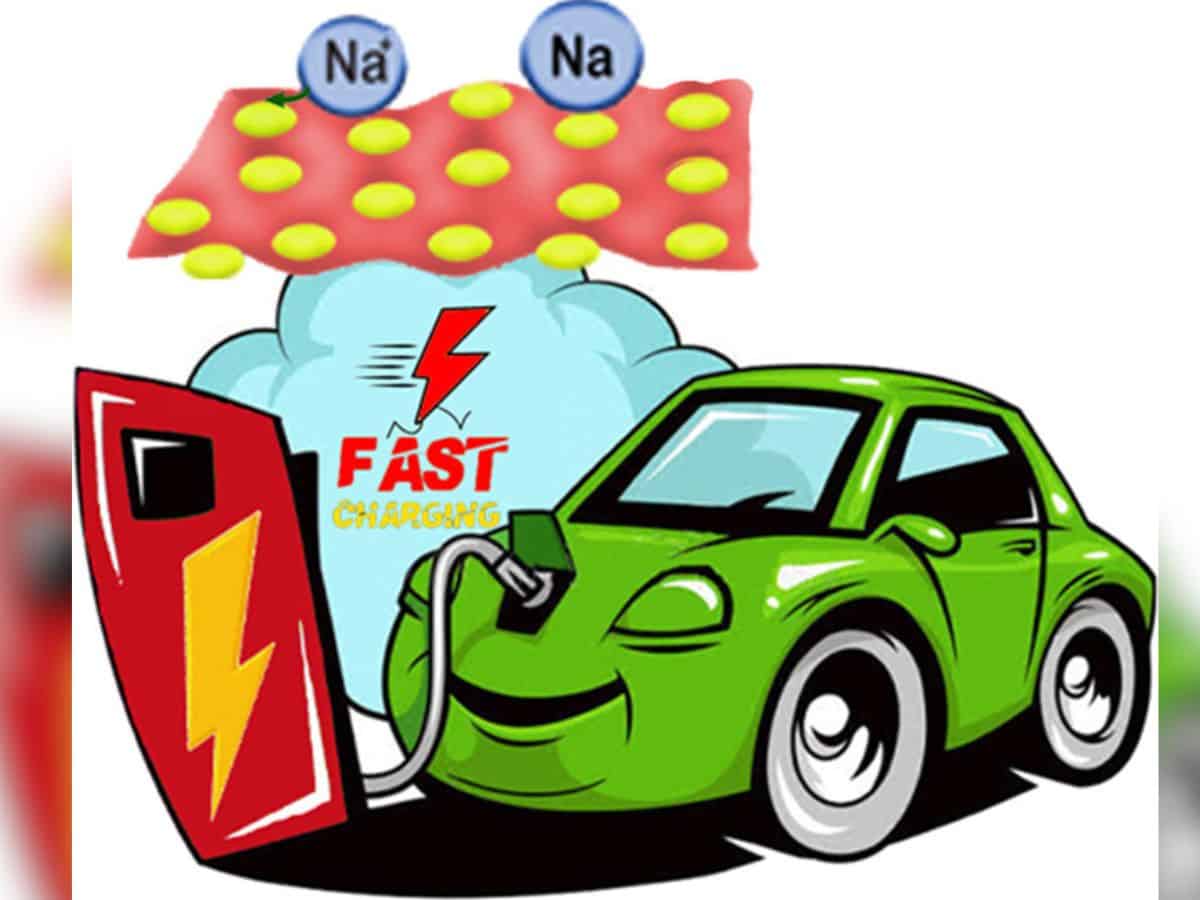
Hyderabad: The University of Hyderabad (UoH), in collaboration with Tata Institute of Fundamental Research (TIFR) Hyderabad, has developed electrode materials which have the potential to fast charge-discharge energy storage applications for sodium-ion batteries.
The laboratory in the Centre for Advanced Studies and Electronics Science and Technology, School of Physics (CASEST) at the UoH, is working on developing electrode materials for sodium-ion batteries.
The battery industry is currently experiencing a significant amount of innovation. The pursuit of enhanced efficiency and performance in technologies that can provide additional value to the market is a continuous area of research.
They have developed a Tin antimony alloy-based reduced graphene oxide composite for fast-charging sodium-ion batteries.
The composite electrode delivered ∼320 mAhg-1 capacity in >300 cycles with Sodium as the other electrode. This electrode material retains∼a 300 mAhg−1 specific capacity at a 500 mAg−1 specific current density even after 2.5 Ag−1 charge-discharge rates, indicating its potential in fast charge-discharge energy storage applications.
The density of sodium batteries remains relatively low, ranging from 140 Wh/Kg to 160 Wh/kg, in contrast to the higher density of lithium-ion batteries, which typically falls within the range of 180 Wh/Kg to 250 Wh/Kg.
In recent years, the utilisation of sodium-ion batteries is increasingly gaining traction within electric mobility domains. These power sources offer enhanced energy efficiency, rapid charging capabilities, resilience to extreme temperatures, and safeguards against overheating or thermal runaway incidents.
Compared to other commonly used batteries, these batteries exhibit reduced toxicity due to their lack of reliance on lithium, cobalt, copper, or nickel, which have the potential to emit environmentally harmful gases in the event of a fire. Moreover, they exhibit a high degree of adaptability across various applications.
However, one significant drawback associated with sodium batteries pertains to their energy density, which refers to the quantity of energy stored relative to the volume of the battery.
The research work has been carried out by PhD Scholar, Ms Arya Sohan and the Principal Investigator is Dr Pratap Kollu, a faculty member at the CASEST.
The UoH project grant from the Institute of Eminence has fully funded this research. Their work has been published in the Journal of Energy Storage.



